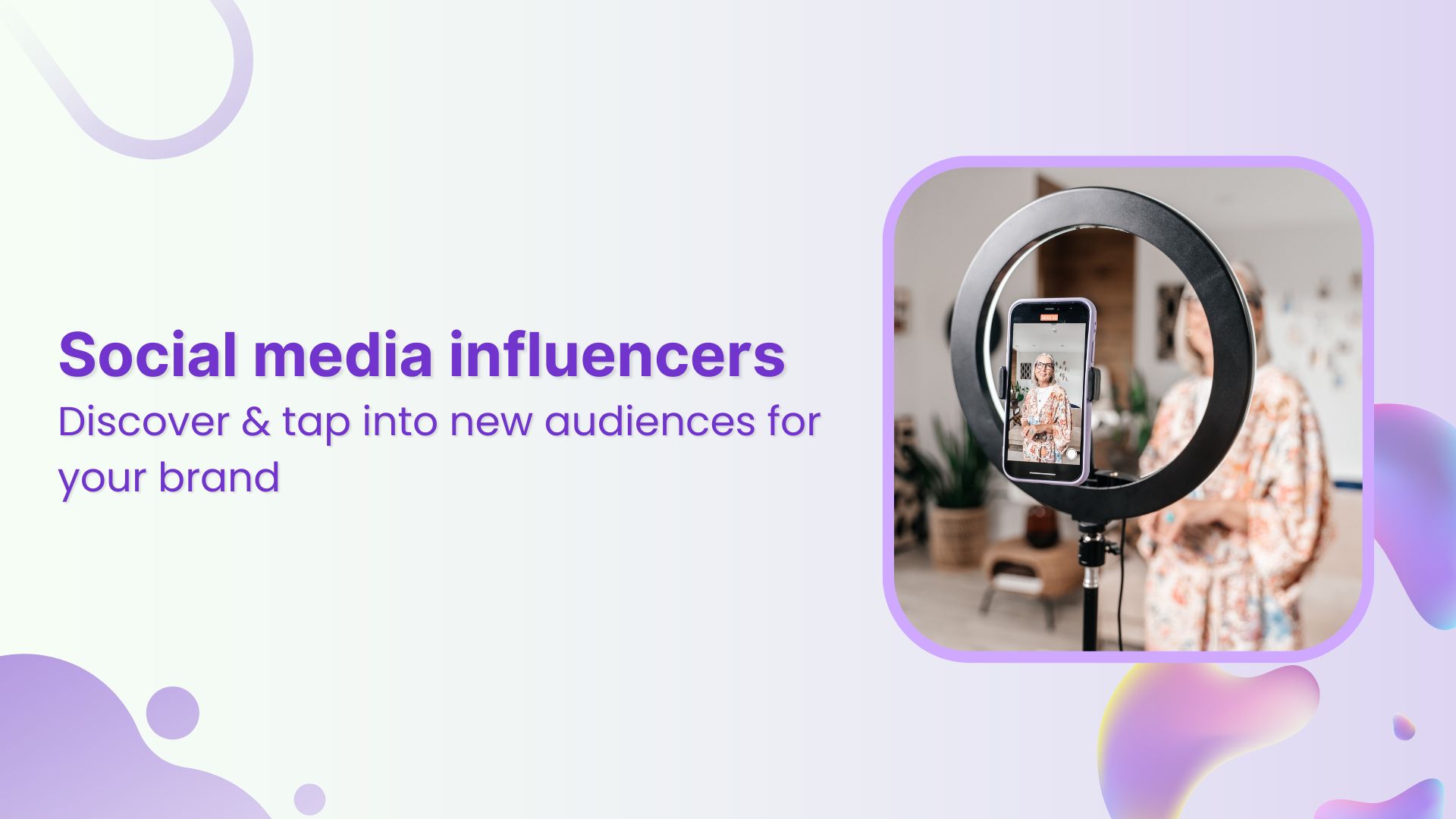Social media has evolved from a novel concept into an indispensable tool. Any marketing strategy that does not include social media is now considered unusual. Almost 80% of Americans have a social networking profile. Social media marketing is the most effective means to reach your target audience.
Furthermore, almost all major social media networks offer paid advertising opportunities. And the brands may use them to boost their exposure to targeted demographics. It would be best to use social media to reach out to potential customers and key stakeholders.
But, this does not imply that social media marketing is straightforward! You and your team have most likely grappled with generating the proper kind of content to engage the audience.
Don’t worry, and you’re not alone. Many marketing teams find social media team workflow to be challenging. Streamlining social media routines is a terrific way to set social media marketing.
What is a social media workflow?
Planning, creating, launching, and measuring social media marketing initiatives constitute social media workflow.
The social media strategy for many teams begins with a brainstorming session. This is when you come up with post content or campaign ideas for the coming weeks or months. Then, while your social team develops a publishing plan, your creative team may work on assets.
You write a copy for each post. Also, keep in mind that each platform may have distinct requirements: style, tone, and character count. After that, you’ll need to get final permission. Then you can start rolling out your posts according to your schedule.
Finally, you use analytics to determine what worked and what didn’t for your target audience before repeating the process.
Rignite has illustrated their social media workflow as follows:



3 Processes You Can Improve With a Social Media Workflow
Some of the major social media marketing processes you can use in your marketing to assist you in improving your social media process are listed below.
1. Social Media Strategy
Having a strong social media strategy is essential whether you’re planning a new marketing campaign or looking for methods to improve an existing one.
You can use a social media strategy template to clarify your social media goals, find your ideal customers and look for ways to better engage them, analyse your potential competition, evaluate your current social media presence, develop a thoughtful content strategy, and adjust the strategy as needed by using a social media strategy template.
2. Social Media Calendar
A social media calendar is an important part of your social media marketing tools since it allows you to organise each of your social media postings by channel, date, and time.
If you’re constantly juggling too many social media accounts, a social media calendar template will help you better organise and schedule your posts and content. Furthermore, you may easily establish a separate calendar for each channel/project.



Social Media Calendar for Digital Agencies
Organize all your social posts and visualize your client’s social media content plan with an interactive Content Calendar
14 days free trial - no credit card required3. Social Media Analytics and Reporting
For determining the value of your marketing efforts, use the social media analytics report. Monitoring your social media outlets’ performance can help you keep track of effectiveness.
The template allows you to track and keep social media analytics for each network. It includes information such as:
-
-
-
- Total engagement
- Total shares
- All views
- Sign-ups
-
-
How to make the most out of a Social Media Workflow?
A standard for Social Media Image Sizes
Marketing teams will save time if they have all the social media picture sizes recorded somewhere. Digital marketing relies on quality content. But, you can’t expect it to go viral unless you know how to maintain a 1000-word blog piece entertaining.
Images, GIFS, memes, videos, and other visual aids are excellent for making information more engaging. Also, they capture the audience’s attention more (on any platform). Social media image size template design is your one-stop shop for finding out what image dimensions and specifications to use on each network.
A Template for Social Media Bios
Creating and maintaining a social identity is essential for social media marketing. Every small aspect in your profile plays a significant role in the initial impression on your audience.



Now, you can use a social media bios template to make sure you’ve covered all your bases. Also, build a profile that portrays your brand’s voice. The following is a list for starters:
-
-
- Who are you and what do you do?
- What are you doing?
- Why should people connect with you?
- What is the best way to contact you?
-
A template for Social Media Audit
A social media audit is a template that helps you see what’s working and what’s not in your existing social media strategy. Such templates help keep track of new chances and maximize your social media management resources. Also, they increase your audience engagement.
Within this audit, you may examine all your campaign’s metrics. You can measure the number of followers and engagement rate across all networks. Also, use what you’ve learned in your future social media activities!
4 Key Stages of Social Media Workflow
The following are the basic stages of your marketing workflow:
1. Brainstorming
There are a variety of approaches you might use, depending on the makeup and chemistry of your team. There are many other equally viable brainstorming tactics, such as going over your best-performing content, looking at hot hashtags, and so on.
But, for simplicity, let’s pretend you’ve figured out your brainstorming technique.



2. Creating the draft
The following step is to write your posts. This is the most enjoyable and challenging aspect of content development. Because this is when one realizes that their brilliant notion from the middle of the night was not so brilliant after all.
Again, there are a variety of approaches, but here’s a starting point that you may expand on as needed:
-
-
- Research: Determine your target audience and their demands before creating content for them.
- Speak to them in their language: You must first determine your demography for this to operate.
- Work on honing your voice: This is the most challenging part. You must speak your audience’s language while maintaining your distinct voice.
- Make use of photos and videos: Two lines of text will not suffice today. Make sure to add appealing graphics and well-edited videos to your material. Also, check the optimization of your photographs for the platform. Keep in mind that size and measurements are essential. Use social media meta tags to ensure that your posts always look the way you want them to even if your fans start sharing them on their feeds.
- Must add a Call-To-Action: Always include a call to action. You might as well not have posted if you didn’t have this. Make eye contact with your audience. Encourage them to interact with your brand, send them to a landing page, or do anything else to get them to do more.
-
After finishing your content and images, it’s time to complete them. Keep the following in mind:
-
-
-
- Make sure your material is free of typos and errors.
- Re-checking your facts — re-evaluating all the sources you’ve used. Nothing is more humiliating than releasing false stuff into the wild.
-
-
3. Seeking Approval and Feedback
Over the last decade, the value of social media production has skyrocketed. You can’t just throw anything into the wild because it appeals to you.
More significantly, because social media is a communal activity, providing and receiving feedback is just as vital as creating material. Feedback is an essential aspect of developing appropriate content for your audience.
Establishing a process for approval and making it as transparent as feasible will save you a lot of time. Not to mention the nerves that come with hitting the publish button. You’ll have peace of mind knowing who is expected to give the green light.
4. Scheduling – broadcasting during peak hours
It’s time to move on to the last and, arguably, the most time-consuming step: scheduling.
But why is it so crucial to plan? This is why:
-
-
- You can use your calendar to fill in the blanks.
- It’s excellent for maintaining consistency, retaining customers, and fostering loyalty.
- It helps you construct and structure your brand story, which is nearly impossible to do when publishing on the go.
- It’s healthy for the brain — no more tearing your hair out trying to figure out what to post.
-
You can use ContentStudio for scheduling and publishing on social media:



Outside of marketing, professionals from several fields are directly or indirectly involved in social media planning. Here are some other persons to think about while planning your social media workflow:
-
-
- Legal teams: To make sure you don’t do anything that could get you in trouble.
- Product groups: To double-check the accuracy of any product-related data
- HR: To check that your messaging adheres to company policy.
-
6 Steps to Set Up a Successful Social Media Workflow
Brands today must create massive amounts of content while maintaining an omnichannel presence, which is no easy task. As a result, having an excellent social media process is more of a must than an option.
1. Assign specific roles to teammates
Content creators, managers, and graphic designers are all involved in social media marketing. A workflow specifies each of their roles. You can focus on other work rather than supervision when workers understand their scope of work and deadlines.
You’ll need to gather your team and collaborate on the workflow with them to do so.
They’ll all be involved in establishing the workflow this way, and it won’t feel imposed on them. Create a briefing document or an assigning sheet to help clarify this.
Related Read: How to Build an Accomplished Social Media Team for Your Agency
2. Create a strategy for social media management
Create a robust social media strategy as the next phase in your workflow. It’s what will define your content’s what, where, why, and how.
Here are some things to think about while you craft your strategy:
-
-
- What are your objectives in terms of social media?
- Whom do you want to reach out to?
- What platform do they utilize, and how do they use it?
- Who are your main rivals in the industry? What kind of content do they produce, and how often do they do it?
- How much content do you need to develop, and what forms do you need it in?
-
Your objectives could range from raising brand recognition to developing a community to generating leads. However, be clear about them right away and structure your material accordingly.
3. Develop a content schedule
For task management, turn your social media plan into a content schedule.
A content calendar tool aids in the distribution of content throughout days and months. Also, the content organization is based on date, time, and publishing channel.
You’ll be able to track all your posts and guarantee that they’re sent out on time this way. It also makes it easier to manage various social media networks.
It’s ideal to schedule your events at least a month ahead of time. Remember that sticking to your schedule is essential. So you should also be open to impromptu material. Making your calendar flexible allows you to jump on a trend or market at the right time. This can help you get a lot of traction.
4. Create material in bulk
It’s understandable if you don’t feel inspired to write material every day. But, if your deadline comes and you have no ideas, this might become a problematic issue. That’s why batching content is beneficial.
Set out time in your calendar for content development. This can focus on producing a large number of pieces.
This will come in handy on days when you aren’t feeling particularly creative. Additionally, grouping posts together will help you maintain brand and messaging consistency.
Batching content is especially critical for information that requires extensive preparation, such as videos. Shooting many films at once, for example, can save you a lot of time when it comes to video setup.
5. Streamline the approval procedure for the material
According to a Workfront poll, 92 % of marketers believe that approval delays cause them to miss deadlines. That’s a significant quantity. Also, it demonstrates the importance of having good content in place.
Approval is an important component of marketing. It guarantees that the information you post is consistent with your brand and free of errors. But, you must streamline the process, or it will cause more harm than benefit.
As a result, make sure that everyone understands their responsibilities and take deadlines. Communicate with your team to know what is going on and how they should approach the process.
You can also construct an approval plan that includes details. This will make the approval of the social media publishing process go more smoothly. Also, it will eliminate the possibility of unnecessary delays.
6. Keep an eye on your social media performance
After your posts go live, an essential aspect of marketing begins. You should track your content’s success. Also, look at metrics to test if your marketing approach is working and how much money you’re making.
It’s also critical to document your findings and conclusions in a report. So you can share and discuss with your team. This will improve your approach and get better results.
Depending on your goals and available time, you can create valuable reports. Make the findings actionable by sharing ideas and tactics for where and how you need to improve.



Analyze, Understand, and Improve Your Social Strategy
Stack your key social metrics against those of your competitors and make targeted steps towards social media success.
14 days free trial - no credit card requiredTips to improve social media workflow for your agency
Increasing efficiency is the most crucial strategy to optimize your social media operation. You need a consistent and reliable method for social media marketing. A well-organized workflow will free up time and creative energy for other marketing initiatives.
Focus the most on research and planning
Setting aside time to test your audience’s behaviour will save you time in the long run. Also, it’s the key to social media success. Devote a few hours daily to determine what your target audience responds to the most on social media. Do your quote cards, for example, receive positive feedback from your target audience? Or are videos the most popular?
Did your most recent cross-functional campaign go over well with users? This will assist you in determining what type of material to produce in the future. Also, it allows you to spend less time brainstorming and more time generating.
Use templates to create content
Keep templates on hand for all of your most common creative assets in the social media publishing process. You will get an idea of which kind of social media content performs best for your brand and audience. Whether it’s a quotation card template that allows you to insert a new quote each time or a video template for interviews, you’ll find it helpful. Also, the same templates guarantee that your material is consistent, regardless of who is writing it and when.
Content Distribution and Marketing
You’re ready to share your social media content with the world now that you’ve planned and prepared it. A variety of software platforms share this mechanism—link management solutions like Replug.
It lets your brand manage and track the links you use in your posts. Some other planning tools may help you optimize your process. Integrating these tools to operate together can make it easier to share your material.
Being able to update can also help you keep on track. Because social media is such a fast-paced, ever-changing world, missing one social media duty can lead to missing a slew of other deadlines. That is why you should create a clear social media timeline template that you may use again and again.
Setting regular deadlines for sharing information lets your staff know what’s expected of them. So, as a result, they better manage their workload. It also allows you to see where you are in the approval process for social media content.
When putting together your calendar, keep in mind the time and platform you’ll be posting. While there is no such thing as a “perfect” moment to post, there is a perfect time to post for your target audience. As a result, experimenting with post scheduling on each of your platforms can make the difference between a flop and a viral hit.



Measure results and monitor analytics
Review the results from each post to understand the optimum time to post, what material resonates, and which platform is best for your audience. Fortunately, the tools you use to post and manage your content should also enable you to track the campaign’s progress.
It’s a good idea to write out the objectives for each of your social campaigns as part of your strategy. You can only determine success if you know what it looks like, whether it’s leads, engagement, reach, or impressions. After that, once you’ve run a few campaigns, you’ll be able to make more educated decisions regarding your future social media projects and reap the rewards of your efforts.
Make your social media workflow work for you!
Now that social media marketing is a vital component of any marketing strategy. So your team must streamline its social media process. But it doesn’t have to be challenging to improve your workflow!
Begin by learning about your target audience. Also, these integrating social media tools aid in content development and sharing information. Also, they determine what success looks like for your campaigns.
Wasiq Naeem
Wasiq Naeem is a content and digital marketing veteran who is passionate about his writing. Extensive research and producing high-quality content is just another day at the office for him.






